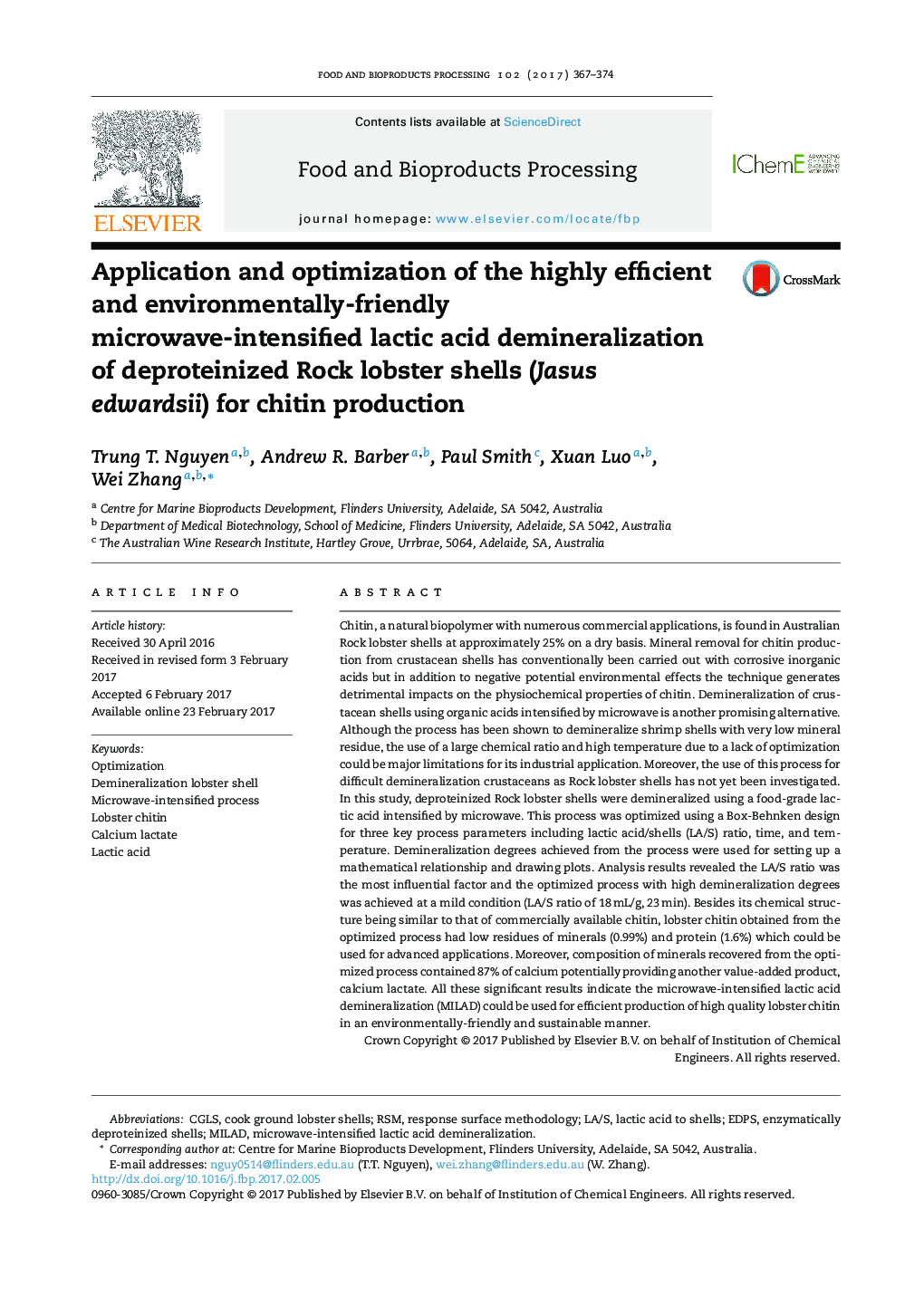| کد مقاله | کد نشریه | سال انتشار | مقاله انگلیسی | نسخه تمام متن |
|---|---|---|---|---|
| 4752982 | 1416467 | 2017 | 8 صفحه PDF | دانلود رایگان |

- Achieving 99.2% demineralization degree at mild condition.
- Producing chitin with high purity being suitable for advanced applications.
- Recovering lobster minerals containing 87% calcium in its profile.
- Setting up the mathematic model for predicting the process.
Chitin, a natural biopolymer with numerous commercial applications, is found in Australian Rock lobster shells at approximately 25% on a dry basis. Mineral removal for chitin production from crustacean shells has conventionally been carried out with corrosive inorganic acids but in addition to negative potential environmental effects the technique generates detrimental impacts on the physiochemical properties of chitin. Demineralization of crustacean shells using organic acids intensified by microwave is another promising alternative. Although the process has been shown to demineralize shrimp shells with very low mineral residue, the use of a large chemical ratio and high temperature due to a lack of optimization could be major limitations for its industrial application. Moreover, the use of this process for difficult demineralization crustaceans as Rock lobster shells has not yet been investigated. In this study, deproteinized Rock lobster shells were demineralized using a food-grade lactic acid intensified by microwave. This process was optimized using a Box-Behnken design for three key process parameters including lactic acid/shells (LA/S) ratio, time, and temperature. Demineralization degrees achieved from the process were used for setting up a mathematical relationship and drawing plots. Analysis results revealed the LA/S ratio was the most influential factor and the optimized process with high demineralization degrees was achieved at a mild condition (LA/S ratio of 18Â mL/g, 23Â min). Besides its chemical structure being similar to that of commercially available chitin, lobster chitin obtained from the optimized process had low residues of minerals (0.99%) and protein (1.6%) which could be used for advanced applications. Moreover, composition of minerals recovered from the optimized process contained 87% of calcium potentially providing another value-added product, calcium lactate. All these significant results indicate the microwave-intensified lactic acid demineralization (MILAD) could be used for efficient production of high quality lobster chitin in an environmentally-friendly and sustainable manner.
Journal: Food and Bioproducts Processing - Volume 102, March 2017, Pages 367-374